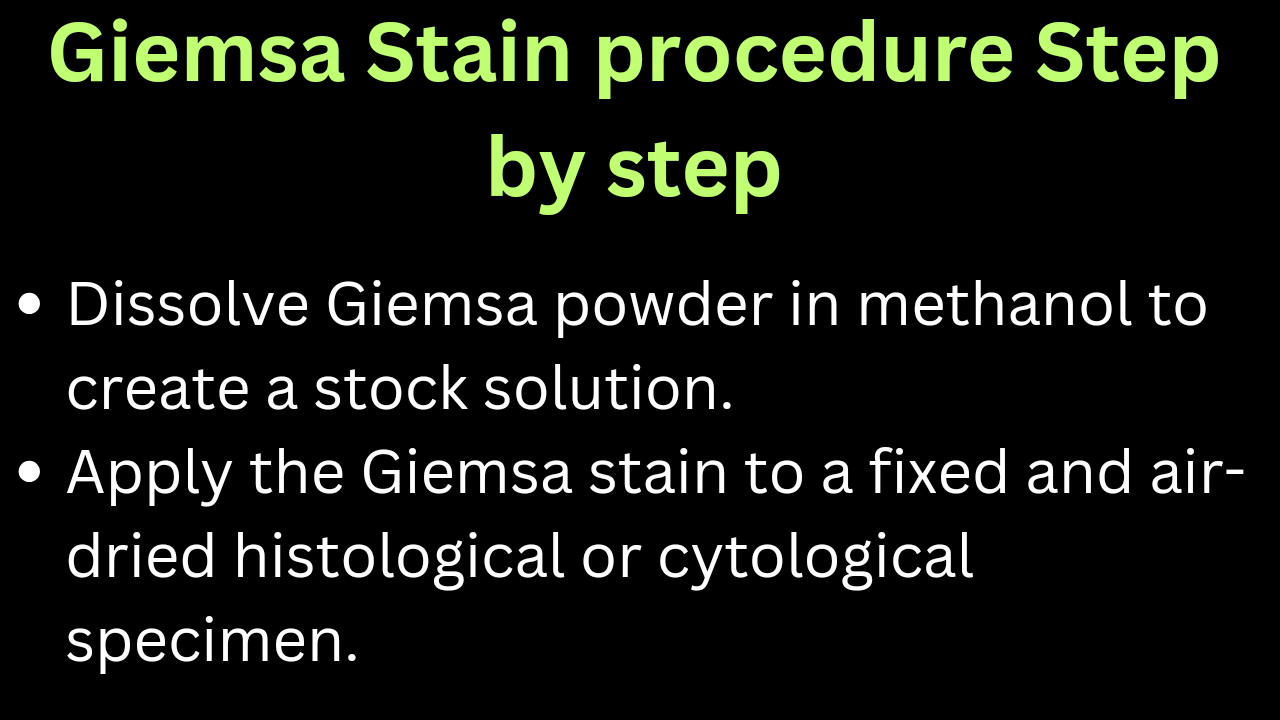Giemsa stain is a histological and cytological stain. It is commonly used in laboratories.
The stain enhances the visibility of components. It is especially useful in blood smears and bone marrow samples.
Giemsa stain principle
The Giemsa stain uses a mixture of dyes. These dyes selectively stain cellular components. This technique aids in the visualization and classification of blood cells. It also helps classify other cell types in specimens.
Giemsa stain preparation
- Dissolve Giemsa powder in methanol to create a stock solution.
- Dilute the stock solution with buffered water to achieve the desired concentration.
- Apply the prepared Giemsa stain to a fixed and dried specimen.
- Allow the stain to interact with the specimen for a specified duration.
- Rinse the specimen to remove excess stain.
- Air-dry the specimen before examination under a microscope.
Giemsa stain composition
The composition of Giemsa stain are:
- Methylene Blue
- Eosin
- Azure B
- Glycerol or methanol (as a solvent)
malaria giemsa staining procedure
- Dissolve Giemsa powder in methanol to create a stock solution.
- Dilute the stock solution with buffered water to achieve the desired concentration.
- Apply the Giemsa stain to a fixed and air-dried histological or cytological specimen.
- Allow the Giemsa stain to interact with the specimen for a specified duration.
- Rinse the specimen with buffered water to remove excess Giemsa stain.
- Allow the specimen to air-dry thoroughly.
- Finally Examine the stained specimen under a microscope, observing the differential coloration of cellular structures.
- Record and analyze the observed features or abnormalities in the stained specimen.
What is the function of glycerol in giemsa stain
Glycerol acts as a solvent for dissolving Giemsa powder, creating a staining solution.
giemsa stain used for which parasites
Giemsa stain is commonly used to detect and identify Plasmodium species, Trypanosoma species, and Leishmania species.
